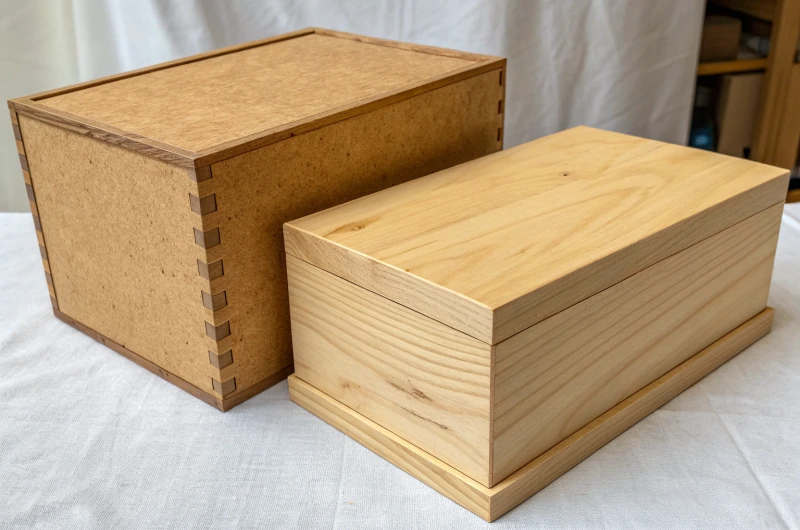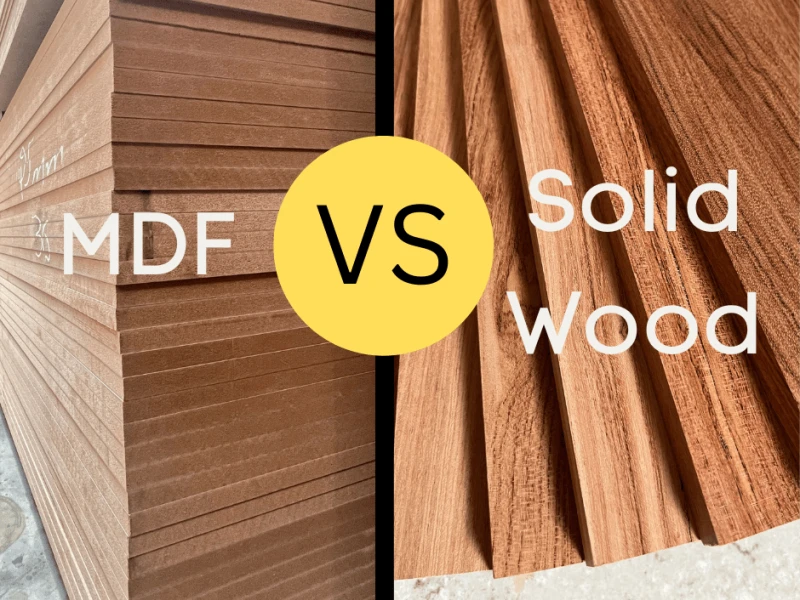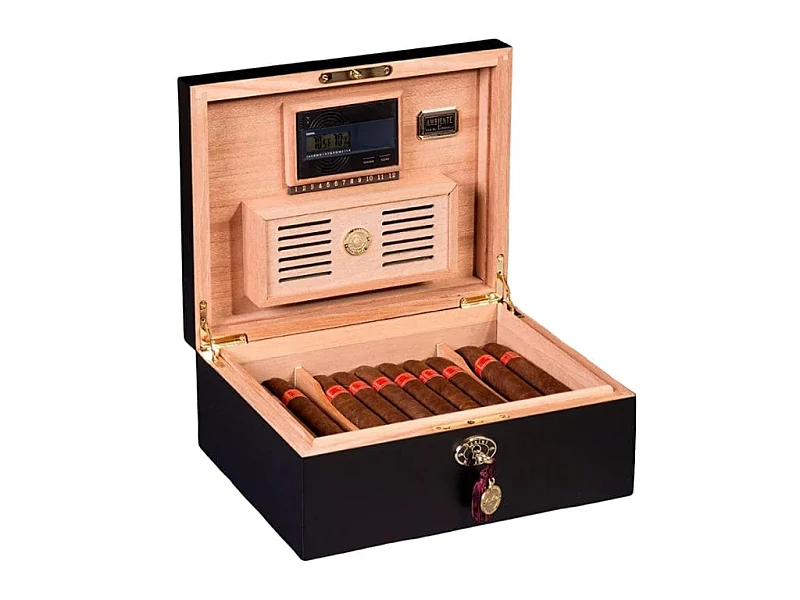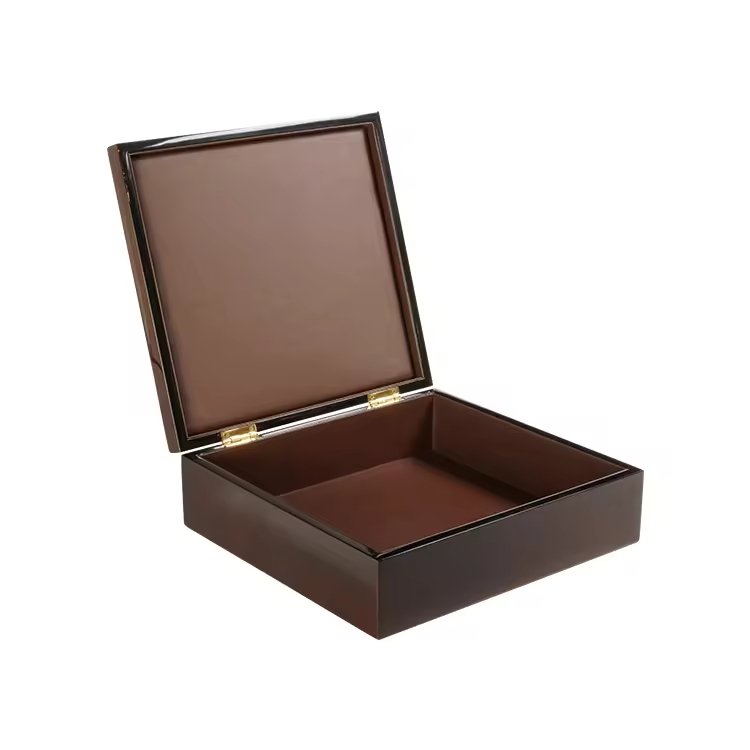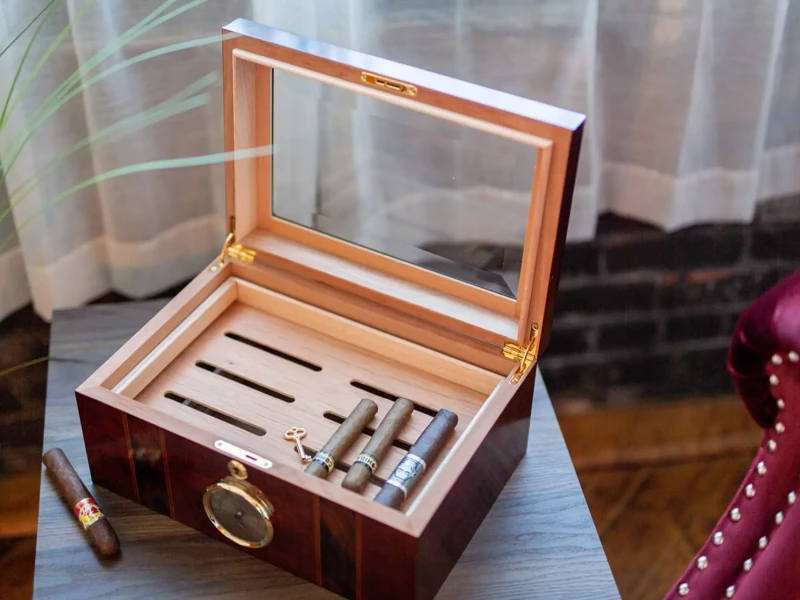
Cigar boxes must last long, but they must also breathe. Wax or varnish extends durability, yet it may interfere with humidity control inside.
Waxing or varnishing protects cedar from aging and mold, but it reduces the wood’s natural humidity buffering, which is critical for cigar freshness.
The challenge is to keep cedar elegant and durable without damaging its core function. Let’s explore how surface treatments affect performance.
How do wax and varnish protect wood against aging, scratches, and mold inside a cigar box?
Wood is beautiful but fragile. Cedar inside cigar boxes is no exception. Wax or varnish offers a shield.
Wax and varnish protect wood fibers from scratches, stains, and mold by creating a barrier against air and moisture penetration.
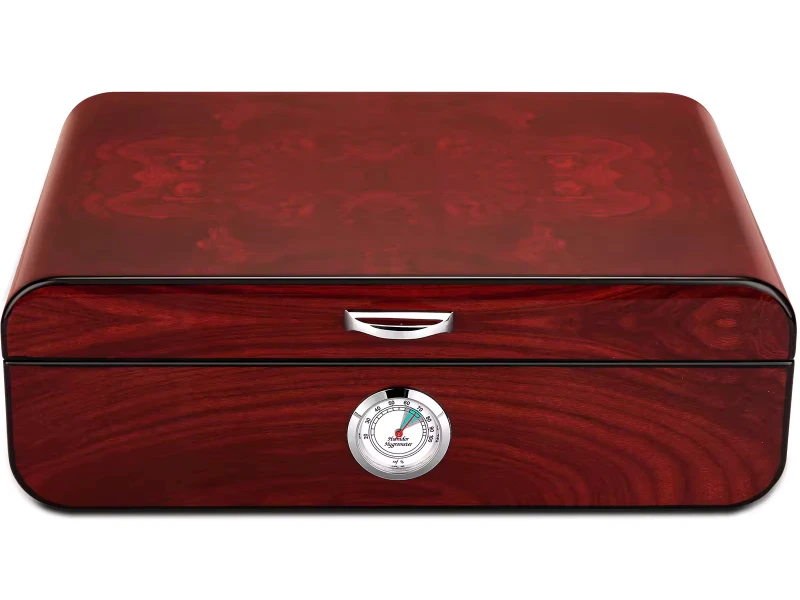
Cedar is naturally aromatic and insect-resistant, but it is still porous. Over years, exposure to changing humidity can dry it, warp it, or cause mildew. Surface treatments change this.
Protection Benefits
-
Scratch Resistance
Wax fills small pores, varnish forms a hard film. Both protect against scratches when cigars slide against the surface. -
Moisture Barrier
Coatings reduce how much water vapor cedar absorbs. This prevents swelling and mold formation. -
Aging Control
Treated wood resists oxidation and discoloration. The cedar looks newer for longer.
Practical Effects in Cigar Boxes
- Wax gives a soft, natural sheen.
- Varnish provides a glossy, hard layer.
- Both make cleaning easier because dust does not stick.
Comparison Table
| Treatment | Scratch Protection | Mold Protection | Natural Look |
|---|---|---|---|
| Wax | Medium | Medium | High |
| Varnish | High | High | Medium |
| Raw Cedar | Low | Medium | Very High |
So waxing and varnishing extend lifespan, but they change how the cedar interacts with cigars.
Why might surface sealing treatments reduce the natural humidity-buffering ability of Spanish cedar?
Spanish cedar is famous for regulating humidity. Coatings change this.
When cedar pores are sealed, it cannot absorb or release moisture effectively. This reduces its role as a natural humidity buffer inside the box.
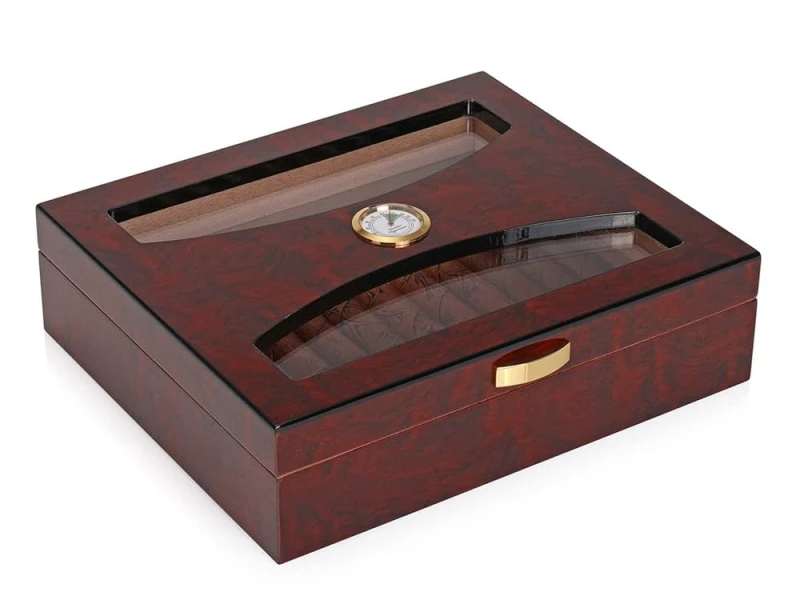
Spanish cedar works like a sponge. It absorbs excess humidity when the air is wet, and it releases it when the air is dry. This balance is why it is used in cigar boxes. Wax and varnish interfere with this process.
How Sealing Works
- Wax: Partially fills pores. Breathability decreases but does not disappear fully.
- Varnish: Creates a closed film. Breathability drops sharply.
- Result: Cedar becomes less responsive to environmental changes.
Risks to Cigar Storage
- Humidity fluctuates more because the box no longer helps stabilize it.
- Cigar wrappers may crack in dry air or develop mold in excess humidity.
- The box relies completely on artificial humidifiers.
My Professional Insight
I once supplied cedar boxes for a luxury brand. They tested varnished vs raw cedar. The varnished boxes looked perfect, but the cigars inside dried faster during shipping. The brand decided raw cedar was safer.
Are there partial or selective coating methods that preserve both durability and humidity control?
Sometimes we do not need an “all or nothing” solution. Partial coatings can balance both needs.
Selective waxing or varnishing protects high-contact areas while leaving exposed cedar surfaces to maintain humidity control.
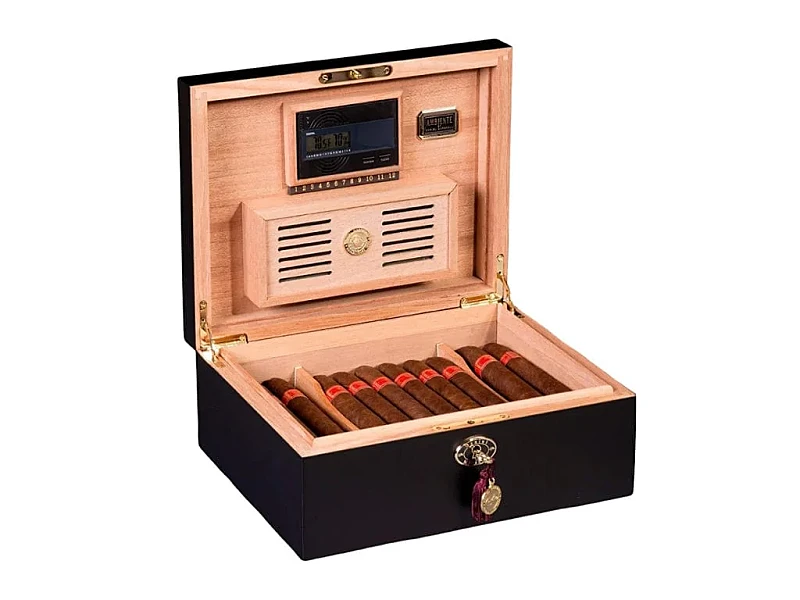
Selective Treatment Options
-
Edges and Corners Only
Coating applied where cigars rub most. Reduces scratches without sealing full surfaces. -
Bottom and Trays
High-wear areas get wax, while side walls remain raw for breathability. -
Thin Waxing
A very light beeswax rub offers slight protection but keeps most pores open.
Balance of Performance
- Protects against scratches where needed.
- Preserves humidity regulation in untreated surfaces.
- Extends box lifespan without killing cedar’s natural role.
Manufacturing Practice
This method requires skilled workers. Coating must be controlled, not brushed over everything. It adds cost but gives clients the best of both worlds.
How do different finishes (beeswax, polyurethane, lacquer) compare in terms of aroma safety and breathability?
Not all finishes are equal. Some are safe, others introduce risks.
Beeswax is safest for aroma and breathability. Polyurethane and lacquer give stronger protection but may seal too tightly or carry unwanted odors.

Finish Comparison
| Finish | Aroma Safety | Breathability | Gloss Level | Durability |
|---|---|---|---|---|
| Beeswax | Very High | Medium | Low | Medium |
| Polyurethane | Medium | Very Low | High | High |
| Lacquer | Medium-Low | Low | Very High | High |
Beeswax
- Natural, food-safe, and subtle.
- Preserves cedar scent.
- Partially breathable.
Polyurethane
- Strong synthetic seal.
- Long-lasting but blocks pores.
- Risk of odor during early use.
Lacquer
- Shiny, luxury look.
- Seals pores heavily.
- Can suppress cedar’s natural aroma.
Buyer Expectations
High-end cigar buyers often value aroma. A coating that blocks cedar’s smell can feel like a downgrade, even if it looks polished.
Top cigar brands want reputation and performance. Their choices reflect this.
Most premium makers use raw or lightly treated cedar linings, avoiding full sealing to preserve humidity control and aroma.
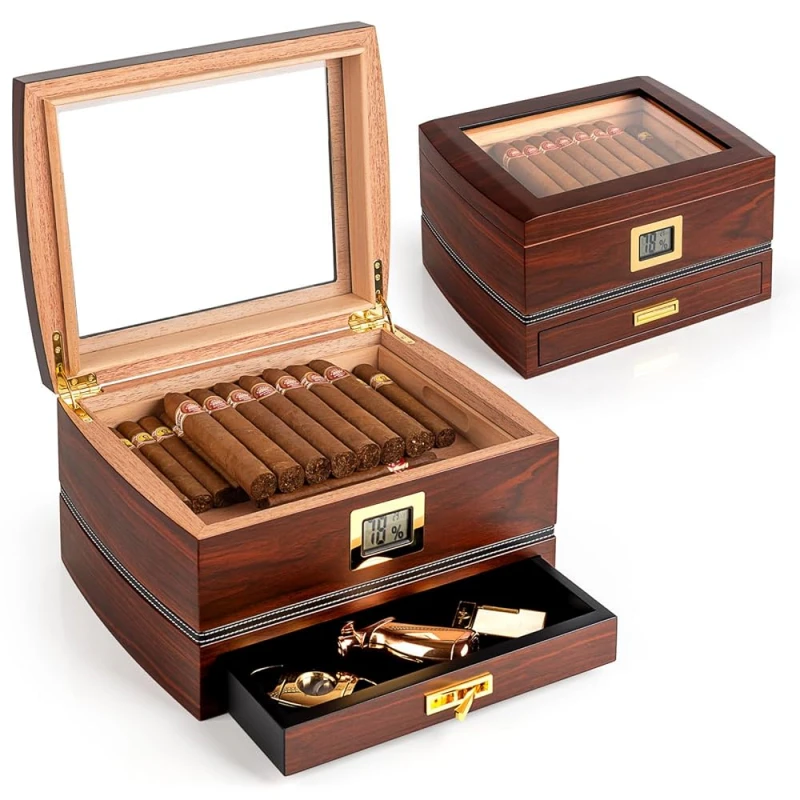
Common Practices
-
Raw Cedar
- Most popular choice.
- Full humidity buffering.
- Traditional and trusted.
-
Light Waxing
- Used only for high-contact areas.
- Protects without sealing fully.
-
Full Varnish
- Rare in premium cigar boxes.
- Sometimes used for export models where buyers want “perfect” look.
Real-World Example
One Cuban cigar brand I studied insisted on raw cedar even for export markets. Their reasoning was clear: “Better to show small scratches than lose aroma and humidity stability.”
Trend
Luxury clients tend to accept cedar’s natural aging as part of authenticity. A little patina is better than artificial shine.
How can manufacturers explain the trade-off between longevity and humidity regulation to high-end clients?
Clients must understand that beauty and function sometimes conflict. Clear explanation builds trust.
Manufacturers should show clients that raw cedar offers best humidity, while coatings extend lifespan. The trade-off is between cigar safety and wood appearance.

Communication Strategies
-
Demonstrate Tests
Show cigars stored in raw vs sealed cedar boxes. Point out humidity differences. -
Highlight Tradition
Explain why premium brands historically use raw cedar. Tradition builds trust. -
Offer Options
Present choices: raw cedar for performance, waxed edges for balance, or full varnish for aesthetics.
Buyer Psychology
High-end clients value authenticity and protection. They prefer safety over artificial perfection. Explaining this avoids misunderstandings.
My Experience
When I presented both raw and waxed cedar options to a client in Germany, they chose raw cedar. They said: “Cigars are alive, and cedar must breathe with them.” This shows how buyers connect emotionally with natural materials.
Conclusion
Wax and varnish extend wood life, but cigar freshness depends on cedar’s natural breathability. Balance is the key to true luxury.
Brand Name: WoodoBox
Slogan: Custom Wooden Boxes, Crafted to Perfection
Website: www.woodobox.com
WhatsApp: +86 18359265311

